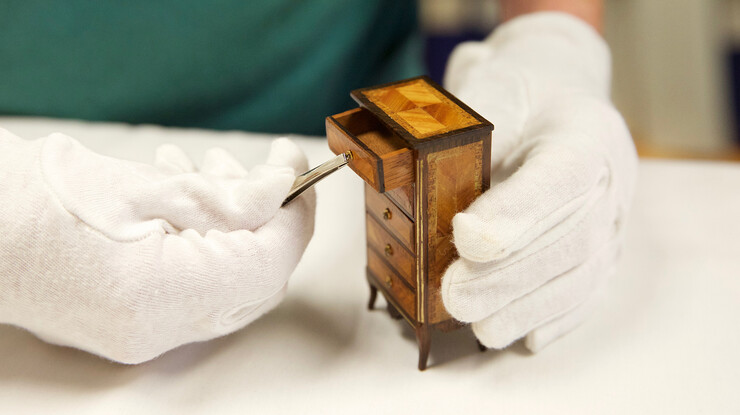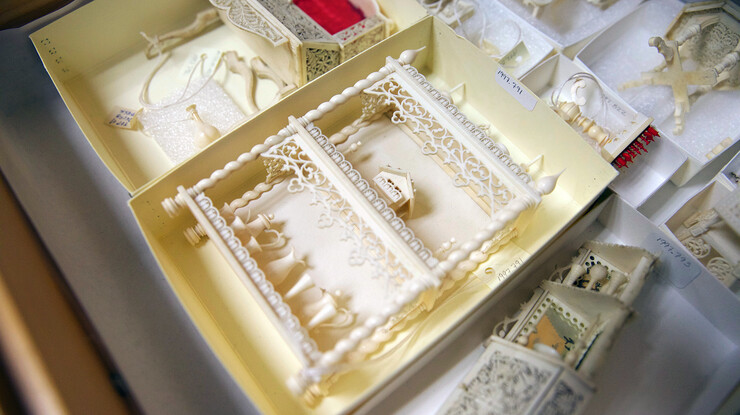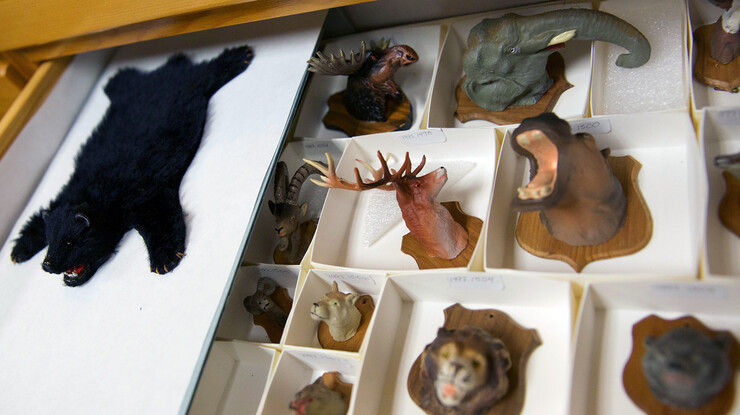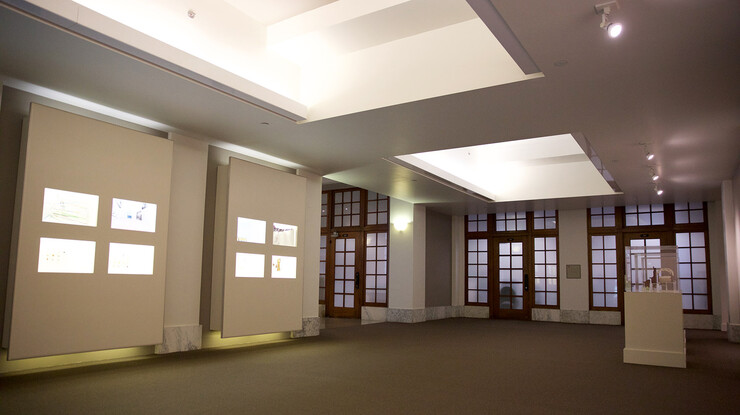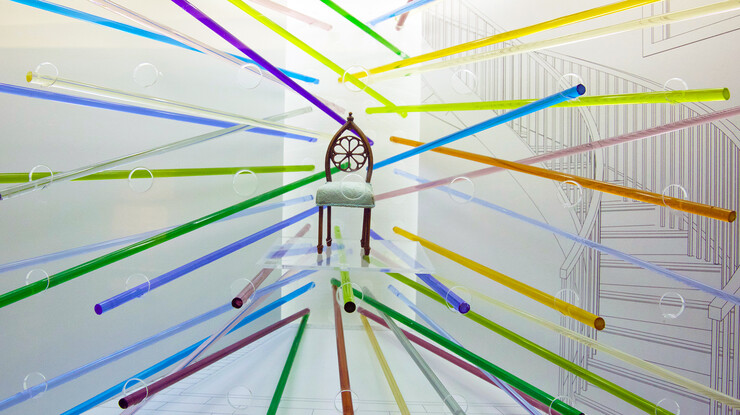· 5 min read
Kruger Collection showcases four centuries of interior design
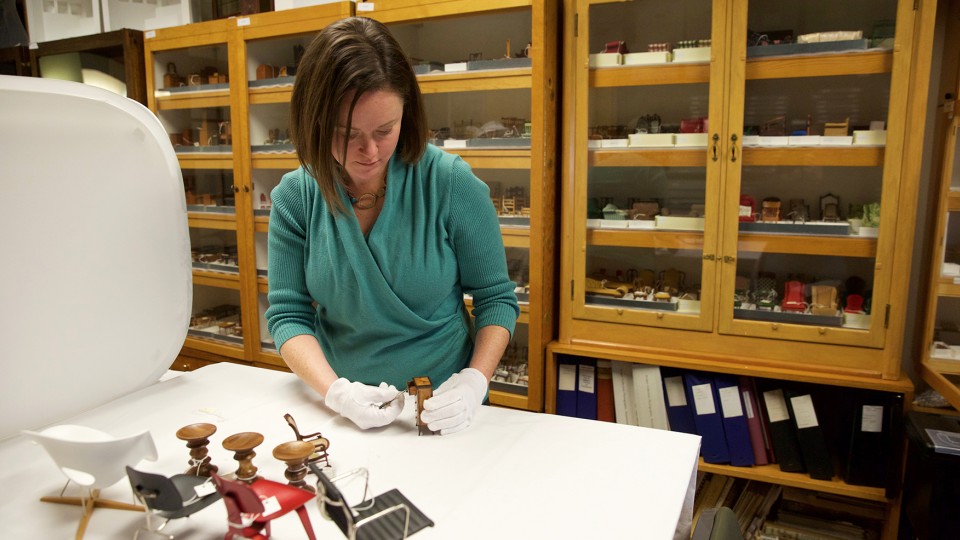
DiAnna Hemsath’s office door is a portal into the history of furniture design.
Inside the custom-made cabinets that line the walls of her office you’ll find nearly 15,000 pieces of miniature furniture and related furnishings ranging from a mahogany Louis XVI game table with inlaid wood, metal ivory and leather to an ashtray with cigar. The pieces are part of the Kruger Collection of Miniature Furnishings and Decorative Arts, for which, Hemsath serves as collections manager.
“I definitely have one of the more unique offices on campus,” Hemsath said. “People who visit often mention that I have a dream job because I work in a storage room for dollhouse furniture. It’s a little more serious than that — but it is a lot of fun.”
Eloise Andrews Kruger, who lived in Lincoln, started the collection while working as a traveling accountant in the 1930s. Today, Kruger’s miniatures span more than four centuries of interior design history and are considered to be one of the most impressive collections in the country.
“She started collecting the miniatures as souvenirs from her travels,” Hemsath said. “As her knowledge of the craft increased, she would attend conventions and purchase pieces from vendors.
“It grew to be a passion and she went on to commission custom pieces directly from craftsmen.”
One of Kruger’s favorite miniature makers was Eric Pearson, a Swedish man who came to America with dreams to be a cowboy. When that career path failed, Pearson moved to New York and became a furniture maker and specialized in miniatures.
In her Lincoln home, Kruger housed the collection in the basement. Hemsath said she had two types of collections — the serious furniture side featured in the Kruger Collection and a set for dolls.
“She had a series of boxes that she called the Clutter house or family,” Hemsath said. “She invented a stories around that family and had a little bit of fun with it. One of the sets was a living room where someone came to visit and wouldn’t leave. And the children’s bedroom had a little boy who let a mouse out of its cage.
“A lot of the dolls were custom made as well.”
When Kruger died in 1995, her miniature collection included more than 20,000 pieces. The Kruger family donated the collection — which includes the miniatures, research library, notes and correspondence — to UNL’s College of Architecture in 1997.
The collection is used to help educate both UNL students and the public about the history of furniture design.
As the collections manager, Hemsath uses the miniatures to develop exhibits for UNL’s Kruger Gallery and other museums. She also makes the collection available for study to faculty and students.
Current Kruger Gallery exhibits include “Occupying Space: The Planes and the Textile,” which was developed by third year interior design students; “Reduction and Multiplicity: Everyday Objects in Miniature;” and “Kruger Masterpieces: Inside and Out,” which is available online.
“That online exhibit includes detailed shots of the miniatures,” Hemsath said. “It’s a way to provide access to items that are difficult and too delicate to be handled by the public.”
Photos of more than 2,000 other items in the Kruger Collection are available through the University Libraries website.
Today, donor gifts help expand the Kruger Collection — both in scale and number of pieces.
“We purchase between two and six pieces annually,” Hemsath said. “In recent years, we’ve started to purchase larger items. The Kruger pieces are 1/12 scale, while the newer items are 1/6 scale.”
Since becoming collections manager in 2008, Hemsath, a UNL alumna who earned a master’s degree in museum studies in the mid 1990s, has learned to enjoy the miniatures and the history they represent.
“A lot of museums have to be separate from students due to the nature and size of the items on display,” Hemsath said. “This is truly a unique collection that fits with the students and the academic mission of this college.
It presents unique opportunities for interaction and helping educate both students and the public about the history of furniture.”
For more information about the Kruger Collection, click here.
